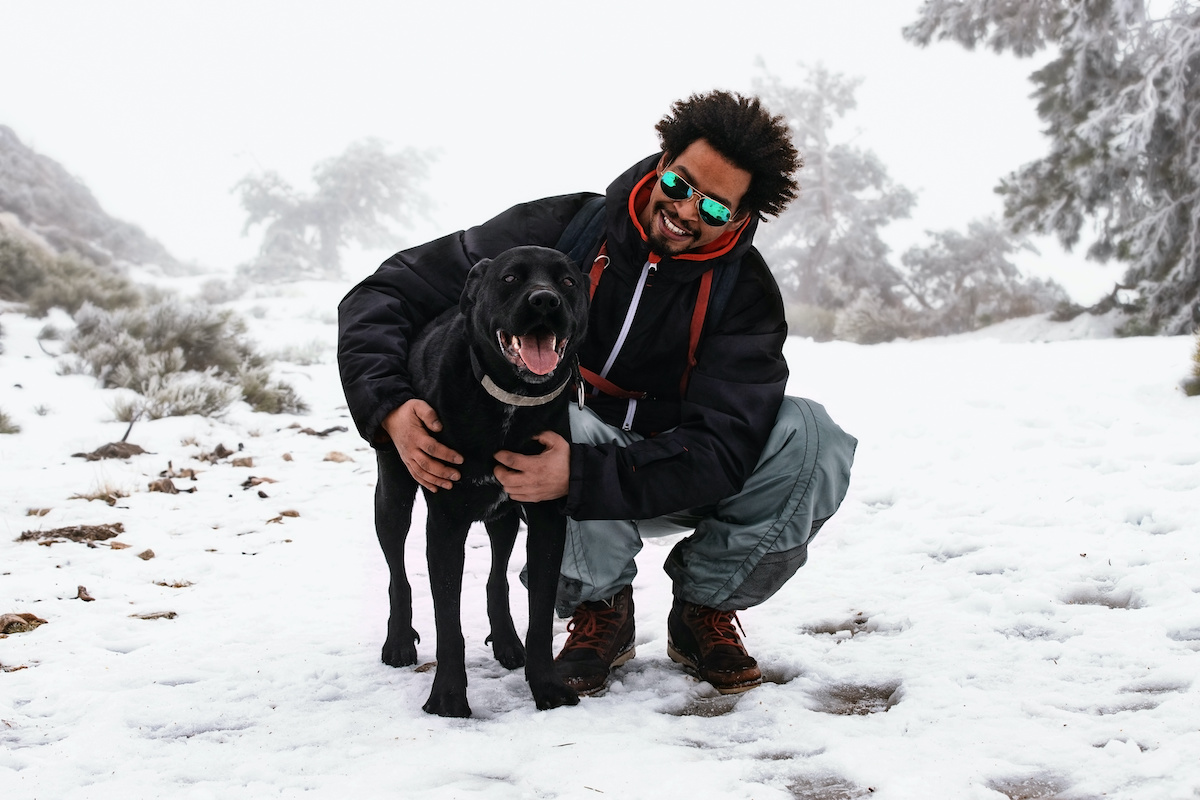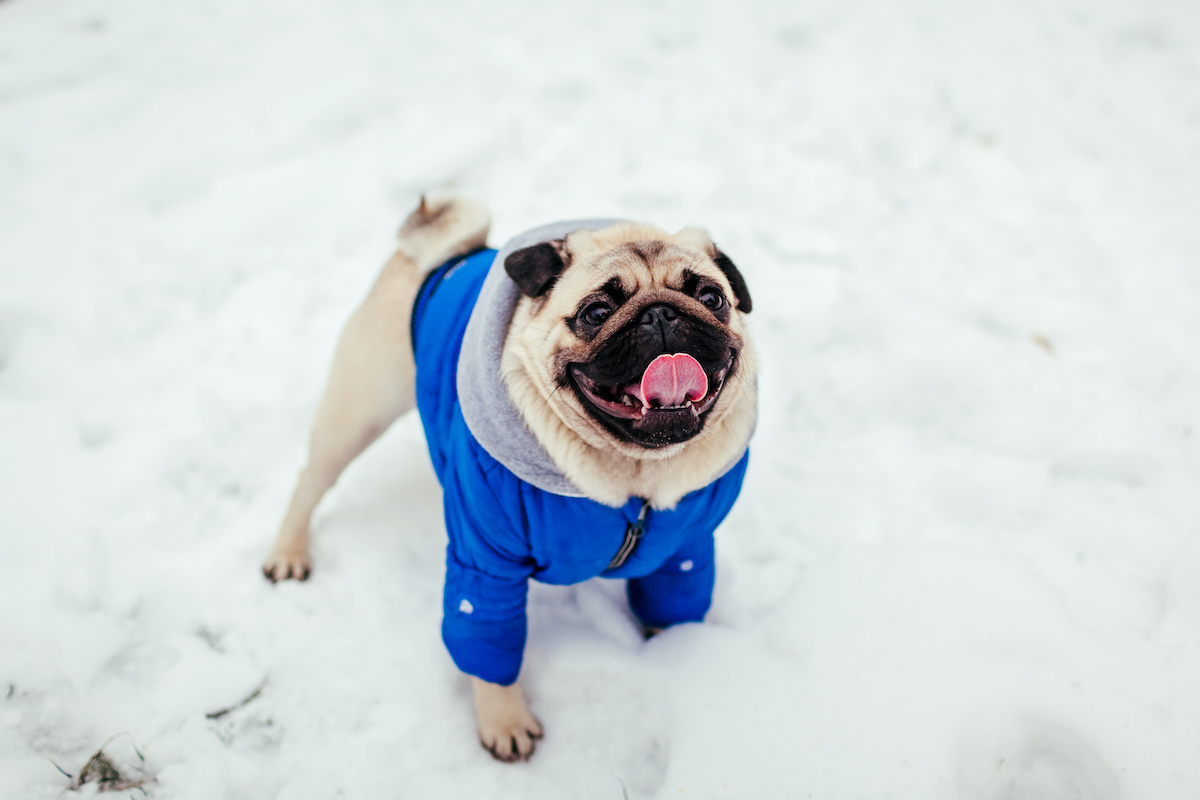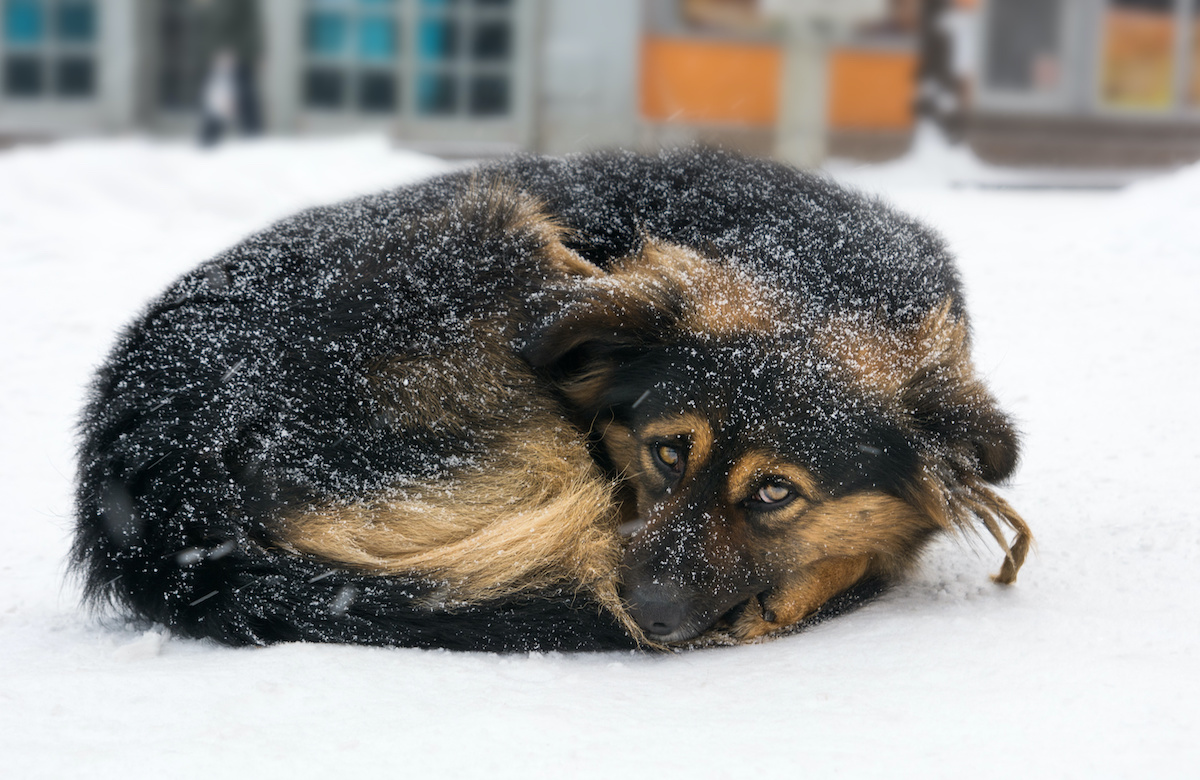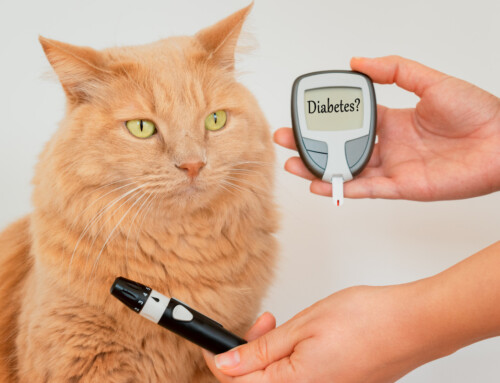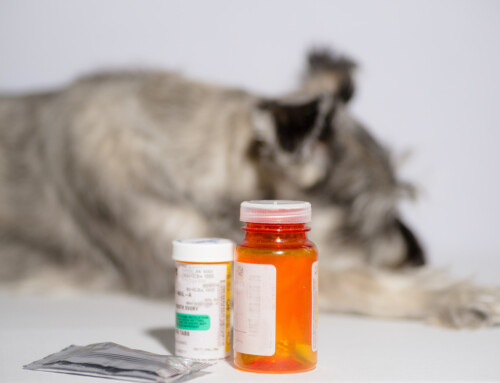When it comes to winter weather, most dogs love a romp in the snow. It’s good exercise and it’s fun for most any pet. Whether the sun is shining or not, too much time out in cold weather could put your pet’s health–even their life–in danger.
There are many things to do–and not to do, to keep your pet warm and safe in the winter months. You also want to know the warning signs of a cold weather crisis for your pet.
Paws Can Get Frostbite
Just like people, an animal’s extremities can get frostbite. Frostbite is damage caused to skin and other tissues due to extreme cold. When air temperature drops below 32°F (0°C), blood vessels near the surface of the skin start to narrow (constrict). The constriction of the blood vessels is the body’s way of maintaining core temperature for the vital organs. It does this by diverting blood toward the core and away from the extremities.
On a dog (or even a cat if you have one that likes the outdoors) the lower legs, paws, tail and even the ears and snout are susceptible to frostbite.
Even if the sun is shining, things like wind, wind chill and freezing precipitation will affect your dog’s body temperature over time. Precipitation accumulates in the fur and can freeze between toes and on the skin. If your dog is small or low to the ground, the underbelly can freeze quickly.
Signs of Frostbite in a Dog
- Skin this discoloration — pale, gray or bluish
- Coldness and/or brittleness of the skin when touched
- Dog reacts in pain when you touch body part(s)
- Swelling in the area affected
- Blisters
- Severe case: black skin
These signs may not show up for several hours or even days. Once you do suspect frostbite, these are things to keep in mind:
Treatment of Frostbite in Pet
If your dog is shivering while curled up in a ball, he or she may be suffering from hypothermia or low core body temperature. To treat this, slowly wrap your pet in warm dry towels or blankets and place hot water bottles, also wrapped in towels, near his body.
- Do NOT rub or massage areas that appear affected by frostbite.
- If you are still outdoors, do NOT warm the frostbitten area if you cannot keep it warm. Refreezing will cause more damage to the tissues.
- Carefully warm the affected area with warm (NOT HOT) water. The recommended water temperature is 104 to 108°F (40 to 42°C). At this temperature, you should be able to comfortably place your hand in the water. If the water is too hot, you may cause more damage than not using any water at all.
- You may apply warm water compresses or soak the affected area in a bowl of warm water. Do NOT use direct dry heat such as a heating pad or hair dryer.
- After you have warmed the area, pat him dry carefully and thoroughly. Do not rub your dog with the towels.
- While traveling to your veterinarian for further medical treatment, keep your dog warm by wrapping him in dry towels or blankets that have been warmed in the clothes dryer.
- Do NOT give pain medication unless advised by a veterinarian. Many human pain relievers, including acetaminophen and aspirin can be toxic to dogs.
If you suspect frostbite in your pet, call for emergency veterinary care.
What to Do to Prevent Frostbite in Dogs
- Monitor and limit the amount of time your pet is outdoors in cold or foul weather. For most breeds this means 30 minutes of cold weather play time is enough, especially the first few times out.
- For young, healthy dogs and for the “winter breeds” they may be able to handle longer periods in cold weather, just build up the time over a period of days. But even the winter dog breeds need to come in from the cold to avoid tragic outcomes.
- Small as well as senior dogs benefit from insulated boots and body garments.
- If you are going on a long winter hike, any dog can benefit from outwear to protect the body from the elements and to maintain core temperature.
- When the dog comes inside from cold, wet weather, dry them off with a warm dry towel. Give the dog a nice belly rub (It’ll warm your hands, too!).
- Be sure your dog has warm bedding to relax in after their time outdoors.
No Dog Left Out in the Cold
Just because you see it in the movies—dogs left in the unheated barn or kennel overnight in cold weather–does not mean that is what is best for your pet. When in a large pack of dogs, they huddle together to create community heat to keep one another warm. A lone dog out in the elements for hours at a time is only likely to lead to a tragic outcome.
No dog, not even those bred for sledding or winter work, should be left out in cold weather for extended periods of time.
What to Do
- If you have to leave your dog outside while you are away from home, make sure they have a sheltered area they can retreat to during bad weather. That area should remain dry and have blankets or hay in it. It should also have several dishes of water and kibble.
- Ask a neighbor or family member let the dog in, if your return home is delayed.
- Board the dog or use dog daycare or an in-home dog sitting service for extended periods of time away from home.
Cold Weather Increases Energy Output
Dogs expend a great deal of energy when playing or working in cold weather. They need more water and more food available to them to make up for the additional energy output.
What to Do
- While you are out with the dog, treat frequently in small quantities. This helps the dog maintain energy production and body heat.
- Pay attention to your dog’s signals. If they are going to their water/feeding area more often, or barking at you in ways and at times they typically don’t, then they are looking to replenish their energy. Give them a small amount of food and keep the water dish filled.
Rock Salt is NOT Pet Friendly
Salt poisoning is a common problem in the winter months. If a dog eats rock salt, it can be fatal. When you are walking your dog, keep an eye on what he or she is sniffing and be sure the dog isn’t licking the salt off the pavement–or off the pads of the paws.
If you see the salt around their mouth or you have any reason to suspect they’ve ingested rock salt, flush the dog’s mouth with water and call your local poison hotline for guidance.
Symptoms of Rock Salt Poisoning in Pets
- Vomiting
- Diarrhea
- Lethargy
- Change in appetite
- Increased thirst
- Increased frequency of urination
- Potty accidents in the house
- Loss of coordination
- Tremors
- Seizures
Don’t Leave a Pet in the Car on a Cold Day
The inside of a car can become like a freezer in the winter months and it is no place to leave your dog for longer than five minutes.
Don’t Let a Cough go Unchecked
If you hear your dog coughing or bringing up clear mucus, it’s time to call the vet. It could be a sign of infection and dog’s can get bronchial infections.It doesn’t feel good and it requires medication.
Keep Your Home Warm and Safe for Pets
Since pets spend less time out-of-doors in the winter months, they are more likely to be snooping around the house. If you’ve put out a space heater or an electric blanket, they need to be out of the reach of your pets. If pets get into your heated blanket or wiring, you could end up with a fire or the animal could get badly injured.
These are general tips that will benefit most pet owners and their animal companions. If you have questions about proper outerwear for your pet, length of time your pet can handle exposure to the elements, or other concerns for your dog’s activity in cold weather, please call the friendly staff at Main Street Veterinarians of Stone Mountain.



